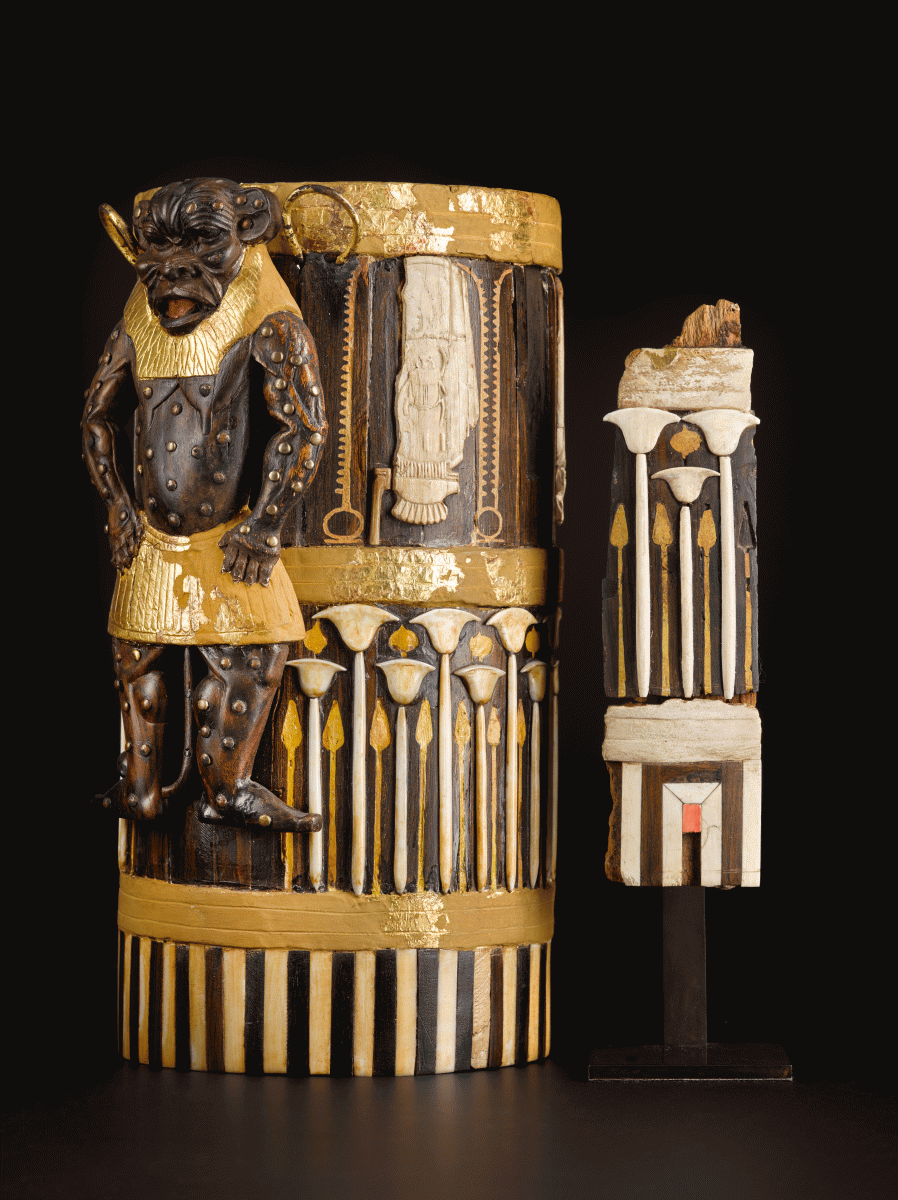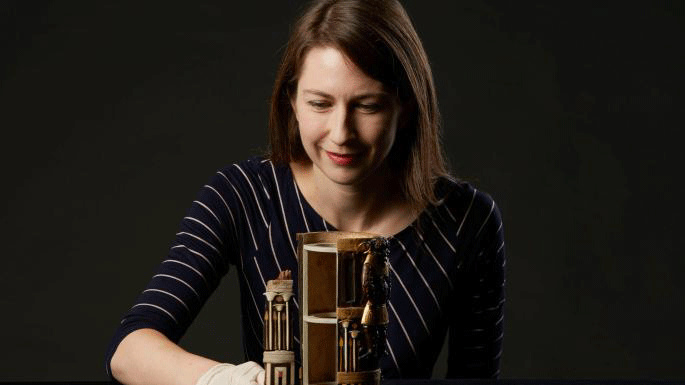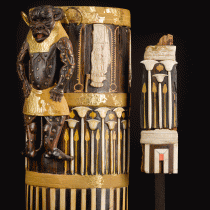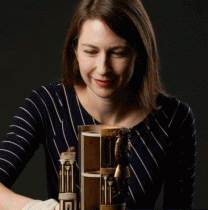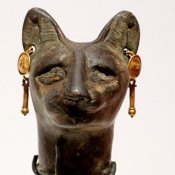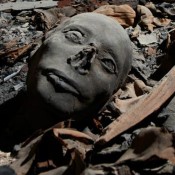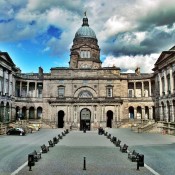Pieces of a fragmented perfume box from ancient Egypt kept at a Scottish museum have been discovered and reunited with the rest of the remains.
The box in question was donated to a Scottish museum 160 years ago and is thought to be approximately 3,400 years old, as the recovery of two lost pieces indicates. Information on the box and relevant pictures were posted on National Museums Scotland blog causing a private collector to associate it with their own possessions. An art dealer acting on behalf of the collector contacted the museum and the fragments were acquired with support from both Art Fund and the National Museums Scotland Charitable Trust for £20,000.
The reunited fragments offer clues about the original design and confirm the box’s origin. The item is believed to have been made during the rule of Pharaoh Amenhotep II, that is 1427-1401 BC, during Egypt’s 18th dynasty.
The box bears intricate decoration, depicting Bes, a protective god and household guardian, a dwarf with lion-like features symbolising good luck and warding off evil spirits. The museum’s ancient Egypt expert, Dr Margaret Maitland, said the decorations on the box are among the finest examples of decorative woodwork. The box is made of cedar, ebony, ivory and gold and was probably made for the Pharaoh’s grand-daughter. It is more elaborate version of other wooden containers often encountered in ancient Egyptian tombs. It was probably used to hold cosmetics or expensive perfumes.
The item was donated to the National Museum of Antiquites by Alexander Henry Rhind, a “young hero” of Victorian archaeology who donated around 600 items as a whole. The surviving pieces of the box were reconstructed in 1895 and some of its decoration was restored in the 1950s – although the pattern on the newly-discovered fragments has revealed errors were made. Later scientists believe that the box originated from a tomb where Amenhotep II’s grand-daughters were buried, in modern Luxor, discovered by Rhind in 1857. The fact is that the fragments the box were discovered long after Rhind had died in a box by curator Joseph Anderson.
The box and fragments will be on display as part of a new exhibition with the title The Tomb: Ancient Egyptian Burial on 31 March. Later on they will become part of the permanent collection of a new ancient Egypt gallery at the National Museum of Scotland opening in 2018-2019.
